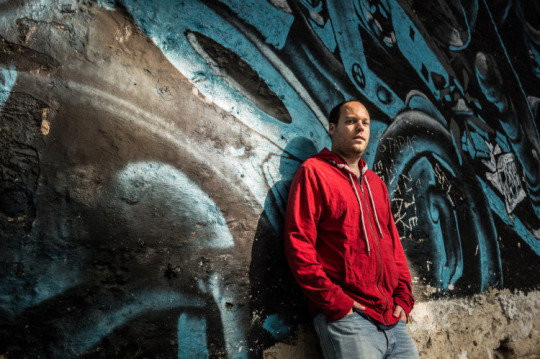Fascinating CENTRAL STATION challenges the formal conservatism of genre writing
People cannot stop talking about Lavie Tidhar’s memorable CENTRAL STATION.

Photo: Kevin Nixon. © Future Publishing 2013
For THE ANGLIA RUSKIN
CENTRE FOR SCIENCE FICTION AND FANTASY, Jonathan McCalmont includes the book on his personal shortlist for the Arthur C. Clarke Award.
As far as I am concerned, rules and procedures are important but so too is recognising the brilliance of a book like CENTRAL STATION. On paper, CENTRAL STATION should be the kind of book that is pointedly absent from my shortlist given that it not only features space stations and vampires but also started life as a series of short stories published in genre magazines. What drew me to CENTRAL STATION – aside from its multicultural and unequivocally pro-immigrant themes – was its mosaic-like structure. As markets for adult genre literature contract, genre imprints have grown ever-more cautious and that caution often manifests itself as a reluctance to indulge in anything more exotic than character-based narratives written with either close first-person or omniscient third-person narration. CENTRAL STATION not only challenges the formal conservatism of genre writing, it challenges the idea that we are ever anything more than parts of a broader whole called place. A strong contender for this year’s Clarke Award, I will be outraged if CENTRAL STATION does not land Tidhar his first ever Clarke nomination.

Michael Levy at THE NEW YORK REVIEW OF SCIENCE FICTION praises the work.
Tidhar has now revised these stories, adding a prologue and two new chapters, to turn them into a fascinating mosaic novel. The book has a cyberpunkish feel to it in that most of the characters are augmented in various ways and definitely on the down and out, but it also lacks (quite intentionally, it should be noted) the adrenaline-driven plotting of traditional cyberpunk fiction. Rather, these stories are ruminative, obsessed with memories and what might have been. Each of the book’s ensemble cast is deeply troubled by his, her, or its past, by missed opportunities. Each character is lonely and worried about the future, hoping against hope for some sort of human connection to fill the emptiness in their souls.

What almost all of these characters have in common, as I suggested earlier, is regret. They’ve made bad decisions or in some cases necessary but painful decisions which have left them with significant baggage. They go about their daily lives and make do. None is a hero (except, perhaps, Isobel in the context of her gaming universe), and none is a villain (though Carmel has been compelled to do awful things). They want to do what’s right but are often unsure of what that is. Most of them have the ability to love if only they can find both the nerve to do so and someone worthy of their affections. Together, the people who live beneath Central Station form as memorable a cast of characters as you will find in recent science fiction. Some folks might find Isobel Chow’s Guilds of Ashkelon universe more exciting, but mature readers who are willing to sit down in Miriam Jones’s bar, have a drink, and watch the passing Tel Aviv scene will be amply rewarded.
The Dutch podcast SCIFI SNAK discusses CENTRAL STATION.
At the foot of rumcentralen “Central Station” in Tel Aviv is a cultural melting pot where humans and human machines live in a virtual tissue of the physical world and the ubiquitous virtual “conversation”
In the book of 2016 weaves Lavie Tidhar more episodic mini-narratives together, drawing on Arab and Jewish culture and mixing it with cyberpunk and sci-fi in a present, close and kaleidoscopic narrative-patchwork.
Pour a glass of anise-steaming arak in a cut recycled glass and sit back while Jens and Ander scifi Snakker “Central Station”
(Translation from Dutch courtesy of Google)
For more info about CENTRAL STATION, visit the Tachyon page.
Cover and image by Sarah Anne Langton
